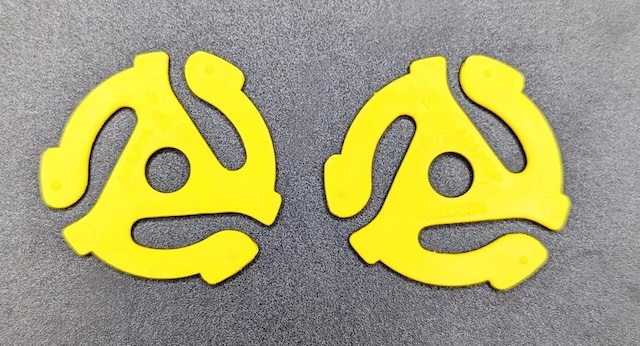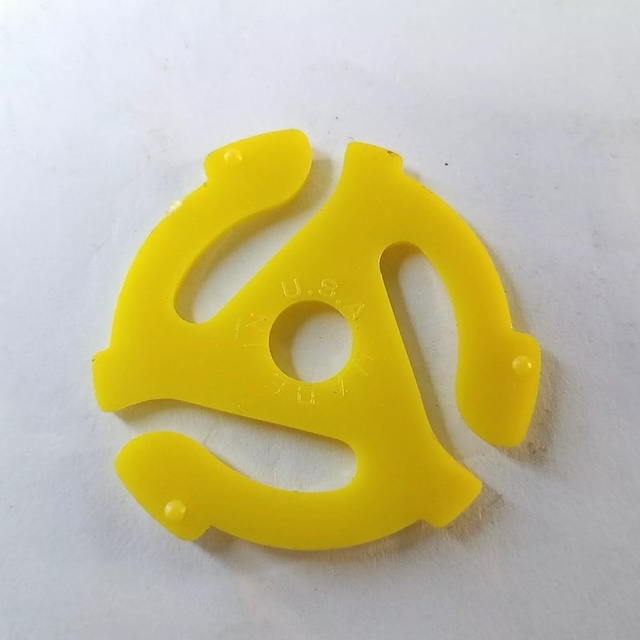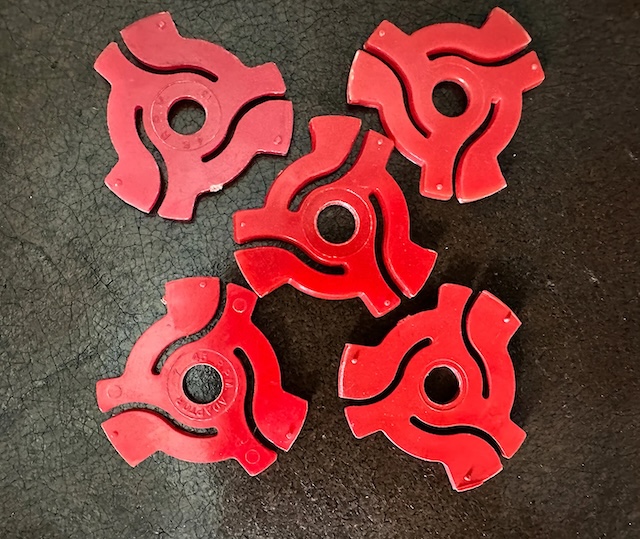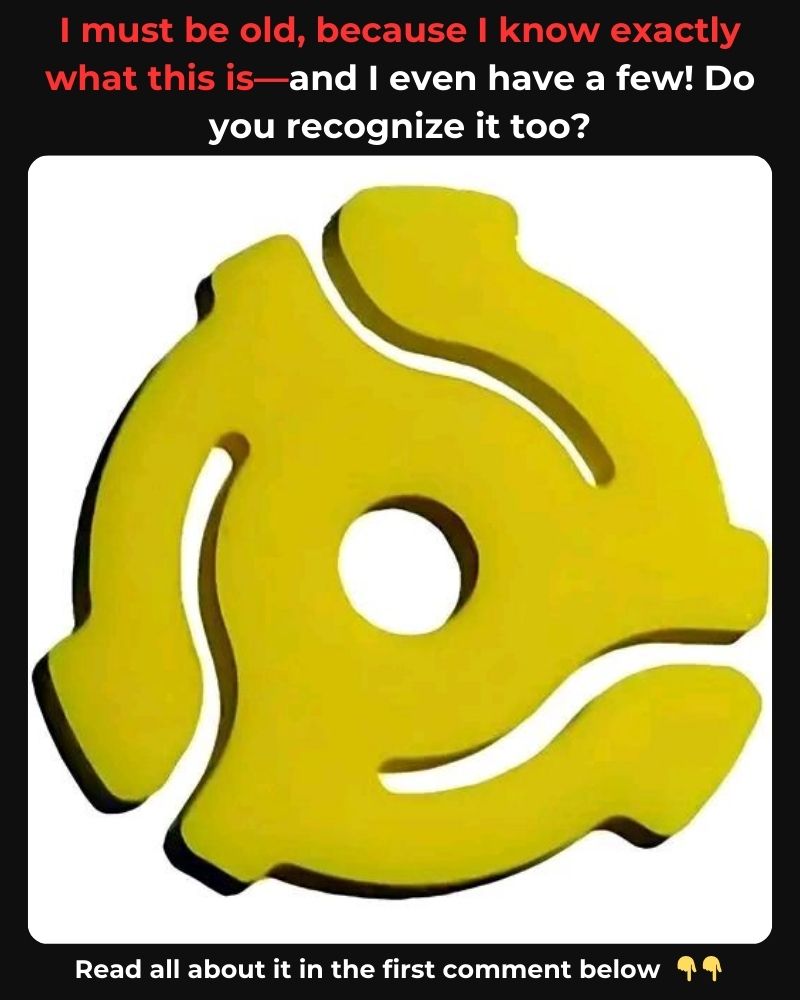In the heyday of vinyl records, a unique little object was an absolute necessity for every music lover – the 45 RPM record adapter. Its simple, compact design belied its crucial role in making music accessible in the most literal sense. As vinyl records surged in popularity, the 45 RPM record format became a standard for single releases, requiring a device that could adapt these smaller records to fit onto standard turntables. This adapter wasn’t just a piece of plastic or metal; it was a gateway to hours of music, memories, and culture.
The Rise of the 45 RPM Record Format
In the post-war years, music technology was transforming rapidly. RCA Victor introduced the 45 RPM record in 1949, touting it as a superior alternative to the traditional 78 RPM discs that had been common until then. Unlike the 12-inch, 33⅓ RPM LP records used for albums, the 45 RPM format was smaller – only 7 inches in diameter. This format was perfect for singles, and soon every major hit was released as a 45 RPM record, making it the format of choice for jukeboxes and home record players alike. However, there was one catch: 45 RPM records had a larger hole in the center, incompatible with the narrow spindles of most record players.
Enter the 45 RPM record adapter. Designed to bridge the gap between formats, this small but essential tool allowed record players with standard spindles to play these new, popular 7-inch singles. Without it, music fans would be stuck with silent records and no way to listen to their favorite songs.

How the 45 RPM Record Adapter Worked
The design of the 45 RPM record adapter was both clever and intuitive. Typically shaped like a small disc with extensions that fit snugly into the large hole of a 45 RPM record, it could be quickly inserted and removed, allowing seamless switching between records. Some adapters were made of metal, while others were plastic – like the iconic yellow design that many collectors recognize today. This bright yellow version was particularly popular because it was easy to see and difficult to misplace, adding a touch of color to the otherwise industrial aesthetic of a record player.
Adapting the 45 RPM record to the smaller spindle size on a record player was as simple as snapping the adapter into place, effectively converting the record into one that would fit perfectly on the turntable. It was a small, affordable tool, but for many, it was indispensable. Owning a record player in the 1950s and 1960s meant that you also needed a reliable 45 RPM record adapter if you wanted access to the latest chart-toppers.
The Cultural Significance of the 45 RPM Record Adapter
This tiny adapter holds a nostalgic place in the hearts of music lovers who grew up in the golden age of vinyl. It symbolized freedom and choice in an era when single records were prized possessions and every new release was an event. For teenagers and young adults of that time, record stores were hubs of social interaction, and picking up the latest single was akin to grabbing a hot new album today.
The 45 RPM record adapter played a vital role in that experience, allowing people to listen to singles from their favorite artists with ease. From Elvis Presley to The Beatles, from Little Richard to Aretha Franklin, these singles defined the cultural landscape of the era. Many fans didn’t just collect records; they collected adapters, too. Some manufacturers created customized adapters with logos or unique designs, which became coveted collector’s items in their own right. In this way, the adapter became more than just a tool – it was a symbol of the vibrant music culture of the time.

Unique Events and Facts Surrounding the 45 RPM Record Adapter
One of the most interesting things about the 45 RPM record adapter is how it influenced music playback culture in unexpected ways. For instance, jukeboxes, which were wildly popular in the 1950s, often required these adapters to play 45s. People would crowd around jukeboxes in diners and dance halls, feeding in coins and selecting tracks. Each song had a story, and each adapter was part of the experience.
In the 1980s, as the vinyl era began to wane, these adapters became almost symbolic of an era that was quickly fading. While some adapters were discarded as CDs took over, others became cherished items, tucked away as keepsakes of a bygone age. Today, they are collector’s pieces and often sold alongside rare vinyl records, representing a link to music history. For anyone who has ever held a 45 RPM record adapter in their hands, the feeling is akin to touching a piece of the past.
The Adapter’s Legacy: More Than Just Plastic and Metal
As we moved into the digital age, the need for physical adapters vanished, but the legacy of the 45 RPM record adapter endures. It stands as a reminder of a time when music was something tangible, something you held in your hands. When you dropped that adapter into the record and lowered the needle, it wasn’t just about playing music; it was about creating a personal moment, a memory.
Today, the 45 RPM adapter is not just a relic; it’s a cultural icon. For vinyl enthusiasts and collectors, it remains a small yet powerful reminder of the days when singles ruled the airwaves and a simple tool made all the difference. The tactile nature of using an adapter, setting up a record, and hearing that first crackle before the music starts is something that digital streaming simply can’t replicate.

Conclusion: The Simple Tool That Defined an Era
In a world where music is now instantly accessible, the 45 RPM record adapter takes us back to an era when music felt intimate and special. It was frequently used, indeed a must-have for anyone with a love for vinyl. This small, often-overlooked object helped bring music to life for millions, making it one of the unsung heroes of the vinyl record era. Next time you see one of these adapters, perhaps tucked away in a record store or a vintage shop, remember its story and the impact it had on the world of music.
The 45 RPM record adapter may be a simple piece of plastic or metal, but it holds within it the memories of countless songs, dances, and moments that shaped a generation.



